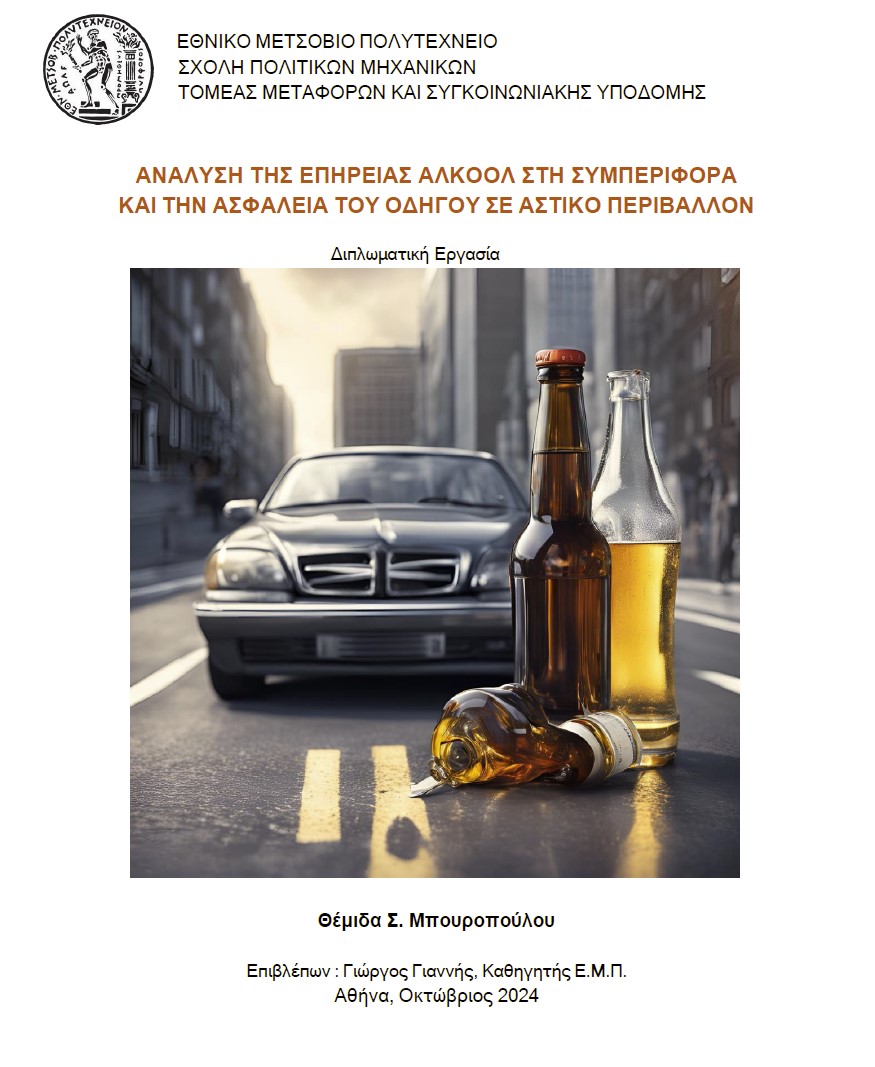
The aim of this thesis is to investigate the impact of driving under the influence of alcohol in urban environments. To achieve this goal, an experimental procedure was conducted using a driving simulator, through which the driving data of 35 participants were collected. To complete the necessary data collection, participants’ characteristics were also determined through a questionnaire survey. Each participant drove four (4) times for each scenario. In each scenario, there was a different percentage of alcohol in the body, measured based on the Blood Alcohol Content (BAC) measurement, which is the concentration of alcohol in the body. The examined percentages were 0% BAC, 0.03% BAC, 0.06% BAC, and 0.09% BAC. The analysis of the results was done through statistical analysis, specifically by developing statistical models using linear and binomial logistic regression. The mathematical models that were accepted after numerous tests, ensuring they met the requirements, concerned the average distance from the vehicle in front, the average reaction time, and two models related to the probability of an accident The main conclusions are that as the amount of alcohol in the body increases, the likelihood of an accident in an urban environment also increases. The distance from the vehicle ahead decreases as alcohol consumption increases. Finally, as the alcohol level in the body rises, the driver’s average reaction time to potential obstacles also increases.
| ID | ad164 |
| Presentation | |
| Full Text | |
| Tags |







